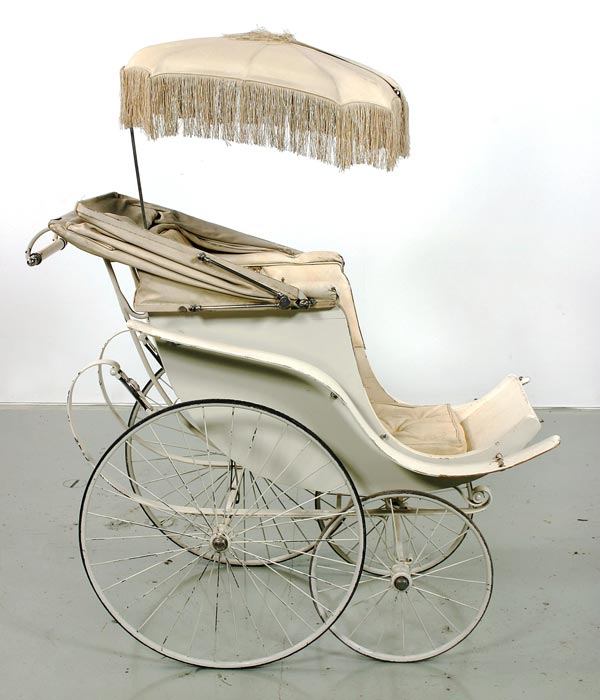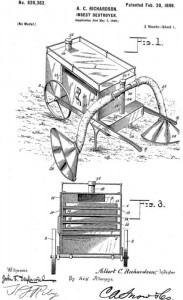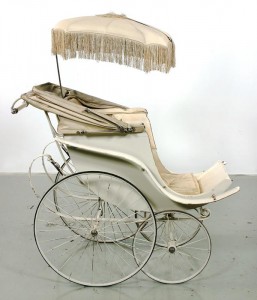
William H. Richardson
In 1889, William H. Richardson patented a more functional baby reversible carriage — meaning the bassinet could be positioned to face both out and in. In addition to modernizing the carriage, Richardson made structural changes that allowed for the wheels to move separately (until then carriages had axels connecting the wheels, preventing independent wheel movement), making the stroller more maneuverable and convenient for parents.

Albert Richardson
Albert Richardson was one of those rare inventors who not only created numerous devices, but created devices that were completely unrelated to one another.
Until 1891 anyone wanting to make butter would have to do so by hand in a bowl. On February 17, 1891 Richardson patented the butter churn. The device consisted of a large wooden cylinder container with a plunger-like handle which moved up and down. In doing so, the movement caused oily parts of cream or milk to become separated from the more watery parts. This allowed for an easy way to make butter and forever changed the food industry.
In 1894, Richardson saw a problem with the way the bodies of dead people were buried. It was common at that time to simply bury bodies in small, shallow graves or to try to lower their caskets with ropes into a deeper hole. Unfortunately, this required several people to work in unison to ensure that the casket was lowered evenly. Failure to do so could cause the casket to slip out of one of the ropes and to be damaged from hitting the ground. On November 13, 1894, Richardson patented the casket lowering device which consisted of a series of pulleys and ropes or cloths which ensured uniformity in the lowering process. This invention was very significant at that time and is used in all cemeteries today.
In addition to these devices, Richardson patented a hame fastener in 1882, an insect destroyer in February of 1899 and an improvement in the design of the bottle in December of 1899.
George T. Sampson
George T. Sampson was an African-American inventor best known for his early patent of the automatic clothes dryer in 1892. He also invented a sled propeller.
Sampson came from Dayton, Ohio. His clothes dryer, U.S. patent #476,416, was a frame that suspended clothing above a stove so that it dried more quickly. Prior to Sampson’s invention, clothes dryers were being invented in England and France in the form of ventilators, which were essentially barrels with holes in them. The barrels would be turned by hand over a fire. Sampson’s invention was also a ventilator, but it eliminated the need for an open flame, and used frames instead of a barrel. George T. Sampson is credited for paving the way to more modern clothes dryers. Electrical clothes dryers did not appear until around 1915, and the Hamilton Manufacturing Company produced the first fully automatic dryer in 1938.
Sampson’s other known patent for a sled propeller, #312,388, was filed in 1885 and involved attaching a propelling device to a tricycle. The wheels were replaced with runners so it would function on the snow. People occupying the sled would operate the propeller with their feet using pedals. The diagrams for this and Sampson’s other patent are still on file with the U.S. patent office today.

